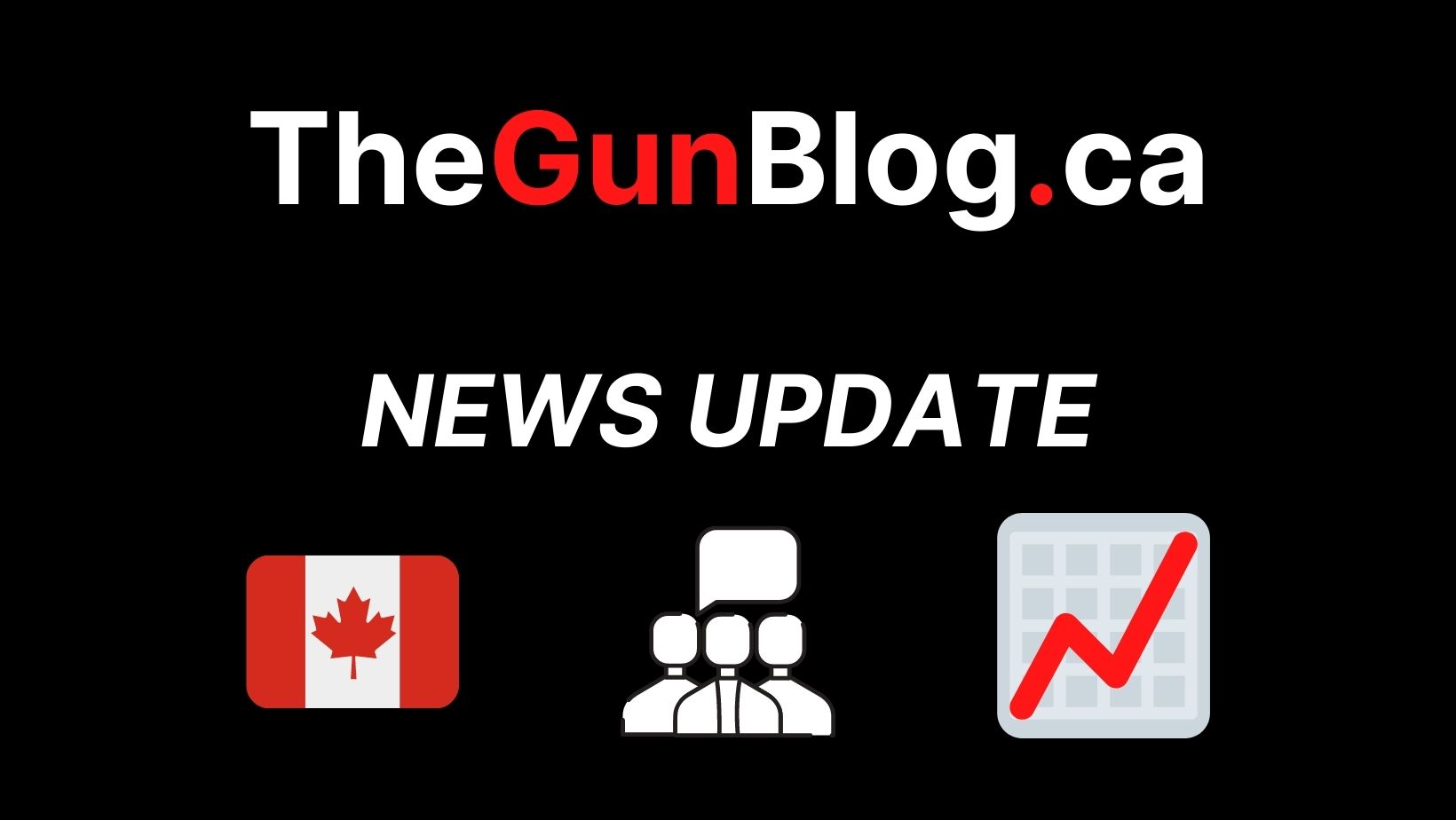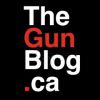IronNoggin
Well-Known Member
Carney Blames Smuggled Firearms for Gun Violence, Shifting Focus From Domestic Gun Control
The previous Liberal government’s focus in reducing gun violence had been to ban a vast array of previously legal firearms and implement a buyback scheme, but Prime Minister Mark Carney spoke on a different priority this week to tackle the problem.
During an unrelated press conference in Hamilton on July 16, Carney echoed what Conservatives and police officials and associations have been saying about what is a core problem of gun violence: smuggled firearms from the United States.
Tory Leader Pierre Poilievre and gun rights advocates have called for the government to use resources to tackle that issue instead of confiscating legal firearms owned by licensed owners.
During the press conference, Carney was asked by reporters about shootings in Hamilton in recent months leading to the death of innocent bystanders, and what his government intends to do about it.
Belinda Sarkodie, 26, was killed on July 11 as the suspect identified by police, 17-year-old Mackale Lavoie, was allegedly firing shots at other individuals.
Carney expressed his condolences to the victims and families and said his government is putting a “huge emphasis” on better controlling the border.
“Because I suspect, and we'll see when this individual is caught, that the gun came from the United States,” Carney said.
He said the “vast majority” of illegal firearms and firearms used in crime “come across our border.”
Strengthening the border and working on prevention were part of measures implemented by former Prime Minister Justin Trudeau, but his gun control agenda was heavily focused on banning models of firearms and prohibiting the purchase and transfer of handguns by licensed Canadians.
Buyback
Following the April 2020 mass shooting in Portapique, N.S., Ottawa banned hundreds of rifle models and has kept adding to the list. The killer had illegally sourced his firearms from the United States.
The government has called the rifles to be banned “assault-style” and “weapons of war.”
Government Bill C-21 adopted in 2023 has also created an evergreen definition to automatically ban new models of semi-automatic firearms.
The buyback/confiscation program for newly designated prohibited firearms got underway in late 2024, with the first phase directed at businesses.
Shortly before Carney became prime minister in mid-March, the Trudeau government had announced the gun buyback for individuals would begin in spring 2025.
Public Safety Canada, based on incomplete data because the absence of a firearms registry, has estimated the cost of the program at over $340 million.
As of mid-July, the buyback phase for individuals has not yet started. During the election campaign, Carney pledged he would not only keep the program but that he would be “reinvigorating” it and “quickly putting it into action.”
“We are committed to this and we'll get it done,” he said in April while flanked by then-Liberal candidate Nathalie Provost. Provost, who was elected MP in the Montreal area on April 28, is a survivor from the Polytechnique massacre and a longtime gun control advocate.
Since then, signals sent or not sent by the new Liberal government about the buyback have been mixed.
On the occasion of the National Day Against Gun Violence on June 6, Carney issued a statement that listed a number of actions being taken by his government.
Among those, the prime minister mentioned the introduction of government Bill C-2 to strengthen borders, as well as measures implemented to intercept illegal guns coming across the border. He also said Ottawa would move ahead to revoke firearms licences from those convicted of intimate partner violence.
There was no mention of the gun buyback.
The program has been very slow to roll out and has met various obstacles, such as Canada Post refusing at one point to be involved in the program, fearing potential conflict with gun owners frustrated by confiscation.
The Liberal government alluded to another hold-up in June apparently emanating from the RCMP.
“We will soon be meeting with people from the RCMP firearm warehouse for further discussions, and we will seek to understand concerns surrounding the program,” Liberal MP Jacques Ramsay told the House of Commons during question period on June 13. Ramsay serves as the parliamentary secretary to the public safety minister.
Ramsay said that 12,000 firearms had been collected from businesses and that 10,000 of them have been destroyed as part of the first phase. He called the buyback a “serious program” that “provides fair compensation to businesses and will soon provide it to firearm owners.”
Ramsay was responding to a question from Tory MP Gerald Soroka, who said that gun crimes have significantly increased since Ottawa put its ban into place five years ago.
“Why won’t this Liberal government focus on criminals, make our streets safe, and leave our responsible firearms owners alone?” he said.
Politics
Carney could take a hit from his base by delaying the implementation of the buyback, but it wouldn’t be the first move that runs counter to the direction of the previous government. Carney scrapped the consumer carbon tax immediately after taking office, and his Bill C-5 on major projects is running into indigenous opposition.
On the other hand, the buyback is not popular in Western provinces where Carney has tried to mend fences.
Blaming the United States for Canada’s gun violence could also be more politically convenient as the country is facing tariffs because of U.S. President Donald Trump’s stated concerns about border security.
The beefing up of the border by Canada in recent months has been a direct response to Trump’s policy.
Aside from stopping illegal firearms at the border, Carney said in Hamilton his government will address gun violence by introducing legislation in the fall for bail reform. The Liberal Party also made pledges on that matter during the election campaign.
“We’re working with the provinces on those issues. I'll be meeting with the premiers next week, I’m sure that’s one of the elements that we will discuss,” he said.
https://www.theepochtimes.com/world...fting-focus-from-domestic-gun-control-5888430
The previous Liberal government’s focus in reducing gun violence had been to ban a vast array of previously legal firearms and implement a buyback scheme, but Prime Minister Mark Carney spoke on a different priority this week to tackle the problem.
During an unrelated press conference in Hamilton on July 16, Carney echoed what Conservatives and police officials and associations have been saying about what is a core problem of gun violence: smuggled firearms from the United States.
Tory Leader Pierre Poilievre and gun rights advocates have called for the government to use resources to tackle that issue instead of confiscating legal firearms owned by licensed owners.
During the press conference, Carney was asked by reporters about shootings in Hamilton in recent months leading to the death of innocent bystanders, and what his government intends to do about it.
Belinda Sarkodie, 26, was killed on July 11 as the suspect identified by police, 17-year-old Mackale Lavoie, was allegedly firing shots at other individuals.
Carney expressed his condolences to the victims and families and said his government is putting a “huge emphasis” on better controlling the border.
“Because I suspect, and we'll see when this individual is caught, that the gun came from the United States,” Carney said.
He said the “vast majority” of illegal firearms and firearms used in crime “come across our border.”
Strengthening the border and working on prevention were part of measures implemented by former Prime Minister Justin Trudeau, but his gun control agenda was heavily focused on banning models of firearms and prohibiting the purchase and transfer of handguns by licensed Canadians.
Buyback
Following the April 2020 mass shooting in Portapique, N.S., Ottawa banned hundreds of rifle models and has kept adding to the list. The killer had illegally sourced his firearms from the United States.
The government has called the rifles to be banned “assault-style” and “weapons of war.”
Government Bill C-21 adopted in 2023 has also created an evergreen definition to automatically ban new models of semi-automatic firearms.
The buyback/confiscation program for newly designated prohibited firearms got underway in late 2024, with the first phase directed at businesses.
Shortly before Carney became prime minister in mid-March, the Trudeau government had announced the gun buyback for individuals would begin in spring 2025.
Public Safety Canada, based on incomplete data because the absence of a firearms registry, has estimated the cost of the program at over $340 million.
As of mid-July, the buyback phase for individuals has not yet started. During the election campaign, Carney pledged he would not only keep the program but that he would be “reinvigorating” it and “quickly putting it into action.”
“We are committed to this and we'll get it done,” he said in April while flanked by then-Liberal candidate Nathalie Provost. Provost, who was elected MP in the Montreal area on April 28, is a survivor from the Polytechnique massacre and a longtime gun control advocate.
Since then, signals sent or not sent by the new Liberal government about the buyback have been mixed.
On the occasion of the National Day Against Gun Violence on June 6, Carney issued a statement that listed a number of actions being taken by his government.
Among those, the prime minister mentioned the introduction of government Bill C-2 to strengthen borders, as well as measures implemented to intercept illegal guns coming across the border. He also said Ottawa would move ahead to revoke firearms licences from those convicted of intimate partner violence.
There was no mention of the gun buyback.
The program has been very slow to roll out and has met various obstacles, such as Canada Post refusing at one point to be involved in the program, fearing potential conflict with gun owners frustrated by confiscation.
The Liberal government alluded to another hold-up in June apparently emanating from the RCMP.
“We will soon be meeting with people from the RCMP firearm warehouse for further discussions, and we will seek to understand concerns surrounding the program,” Liberal MP Jacques Ramsay told the House of Commons during question period on June 13. Ramsay serves as the parliamentary secretary to the public safety minister.
Ramsay said that 12,000 firearms had been collected from businesses and that 10,000 of them have been destroyed as part of the first phase. He called the buyback a “serious program” that “provides fair compensation to businesses and will soon provide it to firearm owners.”
Ramsay was responding to a question from Tory MP Gerald Soroka, who said that gun crimes have significantly increased since Ottawa put its ban into place five years ago.
“Why won’t this Liberal government focus on criminals, make our streets safe, and leave our responsible firearms owners alone?” he said.
Politics
Carney could take a hit from his base by delaying the implementation of the buyback, but it wouldn’t be the first move that runs counter to the direction of the previous government. Carney scrapped the consumer carbon tax immediately after taking office, and his Bill C-5 on major projects is running into indigenous opposition.
On the other hand, the buyback is not popular in Western provinces where Carney has tried to mend fences.
Blaming the United States for Canada’s gun violence could also be more politically convenient as the country is facing tariffs because of U.S. President Donald Trump’s stated concerns about border security.
The beefing up of the border by Canada in recent months has been a direct response to Trump’s policy.
Aside from stopping illegal firearms at the border, Carney said in Hamilton his government will address gun violence by introducing legislation in the fall for bail reform. The Liberal Party also made pledges on that matter during the election campaign.
“We’re working with the provinces on those issues. I'll be meeting with the premiers next week, I’m sure that’s one of the elements that we will discuss,” he said.
https://www.theepochtimes.com/world...fting-focus-from-domestic-gun-control-5888430














